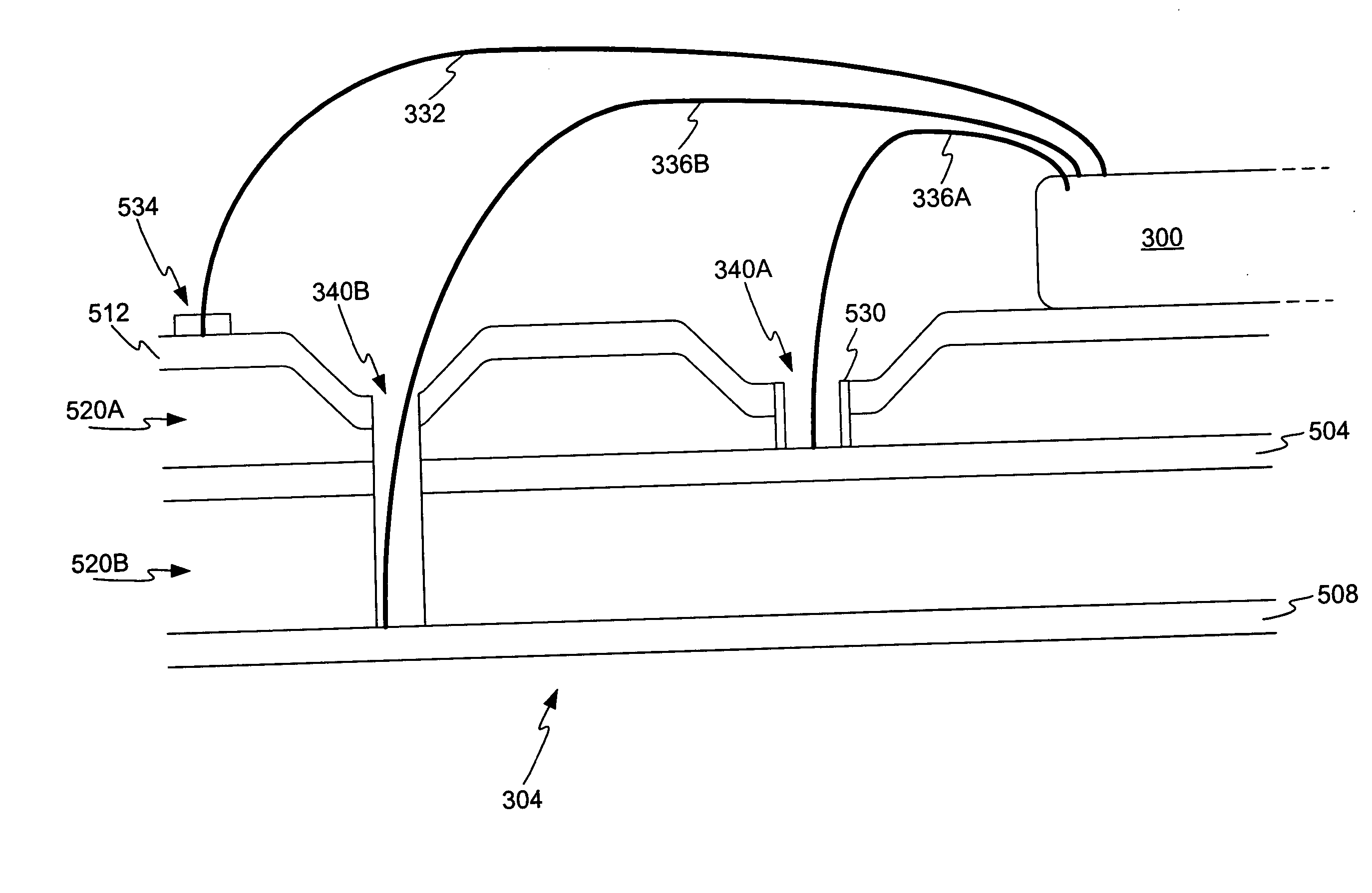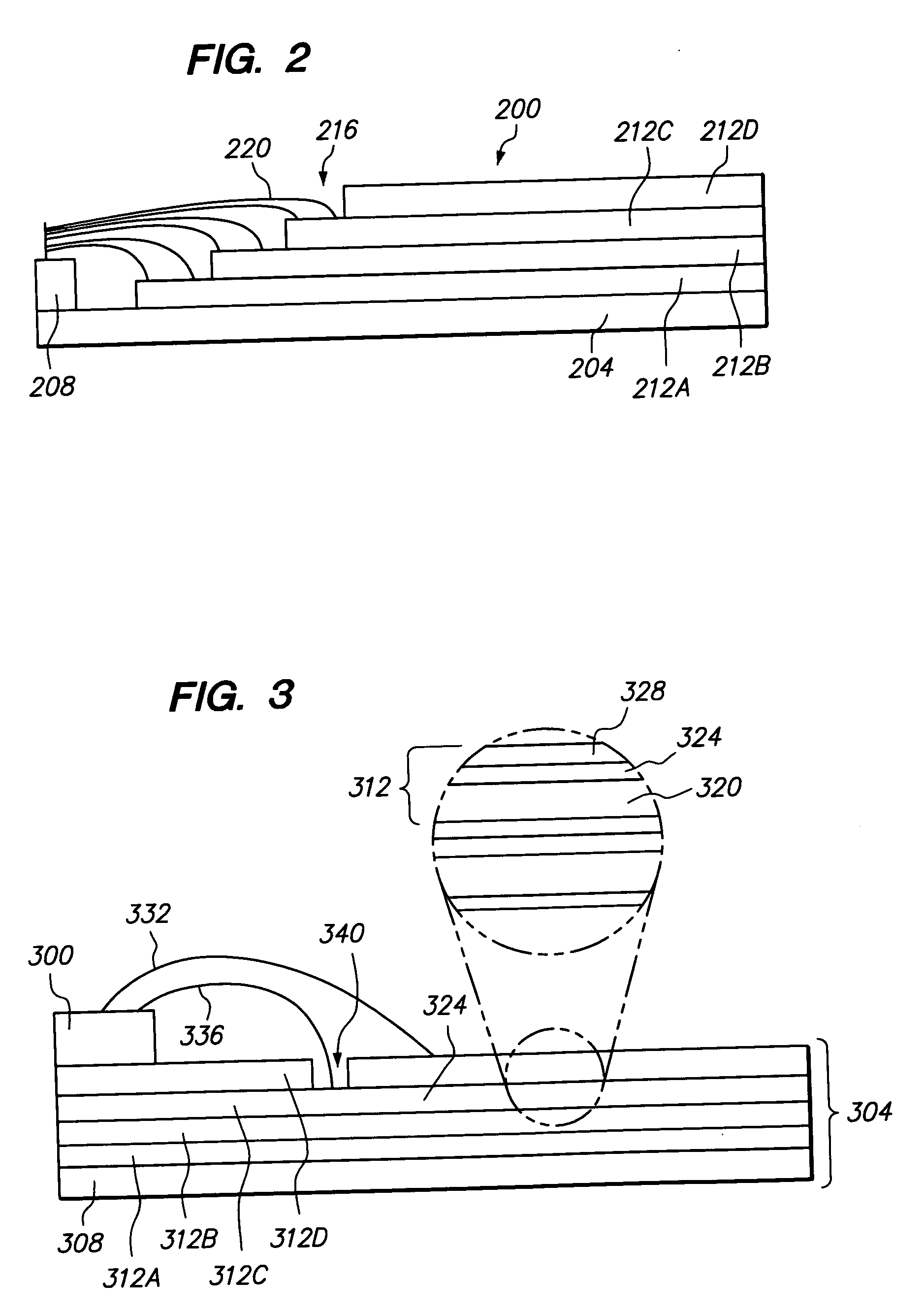Package design and method for electrically connecting die to package
- Summary
- Abstract
- Description
- Claims
- Application Information
AI Technical Summary
Benefits of technology
Problems solved by technology
Method used
Image
Examples
Embodiment Construction
[0030] One proposed solution to the prior art problem of excessive wirebond lengths is to configure a package as shown in FIG. 2. FIG. 2 illustrates a cut-away side view of a package. As shown, a laminated package 200 is configured with a base layer 204 that supports the die 208 and one or more layers 212A, 212B, 212C, 212D that are built up over the base layer 204. The edges of the layers 212 near the die 208 are stair-stepped and the exposed step of each layer is configured with a wirebond pad 216. This arrangement is also known as wirebond tiers. The wirebonds extend from the die and connect to the bonding pads 216. The stair-stepped arrangement of the package, as shown, allows for shorter wirebonds 220 because the bonding pads 216 on the package may be placed more closely together and, due to the stair step configuration, wire-sweep is less likely.
[0031] This configuration is, however, more difficult to manufacture because, each layer 212 that is placed on the base layer 204 mu...
PUM
 Login to View More
Login to View More Abstract
Description
Claims
Application Information
 Login to View More
Login to View More - R&D
- Intellectual Property
- Life Sciences
- Materials
- Tech Scout
- Unparalleled Data Quality
- Higher Quality Content
- 60% Fewer Hallucinations
Browse by: Latest US Patents, China's latest patents, Technical Efficacy Thesaurus, Application Domain, Technology Topic, Popular Technical Reports.
© 2025 PatSnap. All rights reserved.Legal|Privacy policy|Modern Slavery Act Transparency Statement|Sitemap|About US| Contact US: help@patsnap.com



